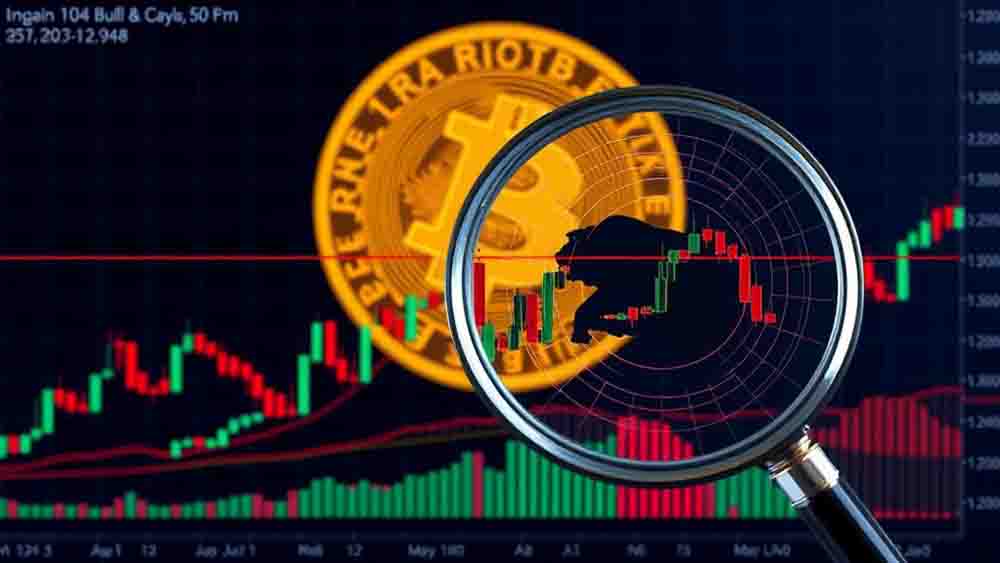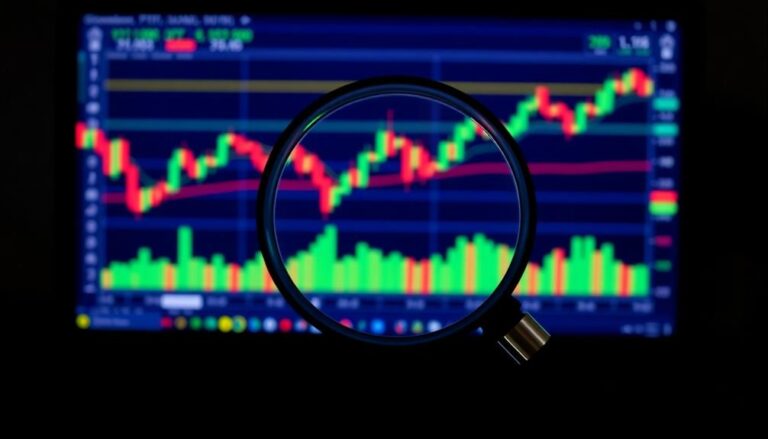When to Buy Cryptocurrency: Market Timing Strategies
Note: This post may contain affiliate links, and we may earn a commission (with No additional cost for you) if you make a purchase via our link. See our disclosure for more info. The crypto world is constantly changing. This content is for informational purposes only and not financial, legal, or professional advice So, please verify the info on the cryptocurrency provider’s websites.
When you're looking to enter the cryptocurrency market, timing can be everything. You've likely heard the old adage “buy low, sell high,” but in the volatile world of crypto, it's not always that simple. Market timing strategies can help you navigate the complex waves of digital asset prices, potentially maximizing your returns and minimizing risks. From understanding market cycles to analyzing daily trading patterns, there's a wealth of information at your fingertips. But before you immerse yourself, it's essential to grasp the fundamentals of these strategies and how they can work for you. The question is: are you ready to reveal the secrets of crypto market timing?
Key Takeaways
- Buy during the Accumulation phase of market cycles when prices are low and sentiment is negative.
- Consider purchasing on Monday mornings or Sundays when prices tend to be lower.
- Utilize technical indicators like RSI and moving averages to identify potential buying opportunities.
- Implement dollar-cost averaging for long-term investing to reduce the impact of market volatility.
- Analyze market sentiment using tools like the Fear & Greed Index to gauge optimal buying times.
Understanding Cryptocurrency Market Cycles
While cryptocurrency markets are known for their volatility, they often follow predictable cycles that savvy investors can leverage. Understanding these market cycles is essential for making informed investment decisions.
Typically, crypto market cycles consist of four distinct phases:
- Accumulation: When prices are low and sentiment is negative
- Uptrend: As prices rise and optimism grows
- Distribution: When prices peak and early investors sell
- Downtrend: As prices fall and sentiment turns bearish
These cycles can last for months or even years, with historical data showing that Bitcoin often leads the market. Altcoins tend to follow suit in subsequent phases.
By studying past cycles, including significant corrections and rallies, you can gain insights into potential future price movements.
To gauge the current market phase, consider using tools like the fear and greed index, which measures market sentiment. This can help you identify ideal buying opportunities during downturns.
Remember that market cycles may align with specific times of the year, such as Q4 price peaks. By recognizing these patterns and understanding the characteristics of each phase, you'll be better equipped to time your crypto investments effectively.

Daily Trading Patterns
Understanding market cycles provides a macro view of cryptocurrency trends, but zooming in on daily trading patterns can offer valuable insights for short-term strategies.
When considering the Best Time to Buy cryptocurrency, it's essential to analyze market activity throughout the day and week.
Key Daily Trading Patterns:
- Peak Activity: U.S. market hours, especially around 5 p.m. ET, see increased trading volume but higher transaction costs.
- Ideal Buying Time: Monday mornings and Sundays often present lower prices, creating advantageous buying conditions.
- Monthly Trends: Early-month trading typically offers better buying opportunities, with prices tending to rise as the month progresses.
- Afternoon Advantage: Increased trading volume in afternoon sessions can create favorable market conditions for buyers.
To enhance your investment strategy, consider these patterns when planning your cryptocurrency purchases.
By timing your buys during periods of lower demand and prices, you can potentially maximize your returns.
Remember, while these patterns provide general guidance, the cryptocurrency market remains highly volatile.
Always conduct thorough research and consider your risk tolerance before making any investment decisions.
Weekly and Monthly Trends
Cryptocurrency's weekly and monthly market trends offer valuable insights for savvy investors looking to optimize their buying strategies.
When considering the best time to buy cryptocurrency, it's essential to understand these patterns:
Day to Buy:
- Monday mornings often present the lowest prices due to weekend inactivity
- Weekdays, particularly Tuesday through Thursday, see higher trading volumes
Week to Buy:
- Early in the month typically shows rising prices
- Weekends experience lower trading volume and more stable prices, especially Sundays
Month to Buy:
– The end of the month frequently sees price declines, creating potential buying opportunities
To maximize your crypto investments, consider these trends:
- Target Monday mornings for potential bargains after weekend lulls
- Explore end-of-month opportunities when prices tend to dip
- Take advantage of early-month price increases by buying in the first few days

Analyzing Market Sentiment
Sentiment analysis forms an essential component of successful cryptocurrency trading strategies. By understanding market sentiment, you can better predict potential price movements and identify buying opportunities.
Bullish sentiment often leads to increased buying pressure, driving cryptocurrency prices higher. Conversely, periods of extreme fear can present attractive entry points for long-term investors.
To effectively analyze market sentiment, consider these key factors:
- Monitor social media platforms for trending topics
- Utilize sentiment analysis tools like the Fear & Greed Index
- Track news cycles and their impact on investor confidence
- Observe trading volume and price action patterns
Fear Of Missing Out (FOMO) can greatly influence market dynamics, causing even skeptical investors to enter the market during periods of positive sentiment.
However, it's important to remain cautious, as excessive optimism often precedes substantial price corrections.
Technical Indicators for Timing
When timing your crypto investments, you'll want to leverage technical indicators for more informed decisions.
The Relative Strength Index (RSI) can help you identify overbought or oversold conditions, signaling potential entry or exit points in the market.
Additionally, moving averages, particularly the 50-day and 200-day, can reveal overall market trends and provide insights into when to buy or sell your crypto assets.
RSI for Overbought/Oversold Conditions
One of the most popular technical indicators for timing cryptocurrency trades is the Relative Strength Index (RSI). This momentum oscillator ranges from 0 to 100, helping traders identify potential reversal points in the market. When the RSI exceeds 70, it typically suggests an overbought condition, indicating that a price correction may be imminent. Conversely, an RSI below 30 often signals an oversold state, potentially presenting a buying opportunity.
To effectively use the RSI in your trading strategy, consider the following:
- Look for divergence between price movements and RSI readings
- Combine RSI analysis with other technical indicators
- Use historical data to validate RSI signals
- Be cautious of false signals in strong trends
While the RSI can be a powerful tool for market analysis, it's essential to use it in conjunction with other technical indicators and broader market analysis.
This thorough approach increases the probability of successful trades and helps avoid misleading conclusions. By incorporating RSI into your technical analysis toolkit, you'll be better equipped to identify potential entry and exit points in the volatile cryptocurrency market.

Moving Averages Identify Trends
Leveraging the power of moving averages, traders can effectively identify trends and make informed decisions in the cryptocurrency market. These technical indicators smooth out price data over specific periods, typically 50 and 200 days, revealing underlying market directions.
Key signals to watch for include:
- Golden cross: A bullish signal where a short-term moving average crosses above a long-term one, indicating potential upward momentum.
- Death cross: A bearish signal occurring when a short-term moving average crosses below a long-term one, suggesting a possible price decline.
The MACD indicator combines moving averages to identify momentum shifts, offering additional insights into buying opportunities.
By analyzing price positioning relative to moving averages, you can spot overbought or oversold conditions, helping guide your entry and exit points.
To implement this strategy:
- Monitor both short-term and long-term moving averages
- Look for crossover points between these averages
- Use the MACD indicator to confirm trend changes
- Consider price position relative to moving averages for timing decisions
Long-Term Vs Short-Term Strategies
In the world of cryptocurrency investing, the choice between long-term and short-term strategies can greatly impact your returns. Long-term investment strategies, like HODLing, typically yield better results by minimizing the effects of market volatility and allowing assets to appreciate over time. In contrast, short-term trading requires constant market monitoring and quick decision-making, which can be riskier and more demanding.
Consider these key points when deciding between long-term and short-term strategies:
- Historical data shows over 70% of day traders lose money in their first year.
- Long-term investors benefit from dollar-cost averaging, reducing average purchase prices over time.
- Successful short-term trading demands strong technical analysis skills and market trend understanding.
- Both approaches benefit from diversification across multiple assets in your crypto portfolio.
Long-term strategies often prove more suitable for less experienced investors, as they require less active management and can weather market fluctuations.
However, if you're comfortable with rapid price changes and have a solid grasp of market trends, short-term trading might be a viable option.
Regardless of your chosen approach, remember to diversify your crypto portfolio to mitigate risks and enhance potential returns.
Risk Management in Crypto Investing
When it comes to managing risk in crypto investing, diversification across assets is an essential strategy you shouldn't overlook.
By spreading your investments across various cryptocurrencies, you can potentially reduce the impact of poor performance in any single asset.
Additionally, implementing stop-loss order strategies can provide a safety net, automatically selling your assets when they reach a predetermined price and limiting potential losses in volatile markets.
Diversification Across Assets
Through diversification across assets, crypto investors can markedly reduce their exposure to risk while potentially maximizing returns. By spreading investments across various cryptocurrencies, you're less vulnerable to the poor performance of any single asset.
A well-balanced portfolio typically includes a mix of established coins like Bitcoin and Ethereum, alongside promising altcoins, to capture both stability and growth potential.
To effectively diversify your crypto portfolio, consider these factors:
- Market capitalization
- Underlying technology
- Use cases
- Industry sector
By selecting assets with different characteristics, you'll guarantee your portfolio isn't overly reliant on similar cryptocurrencies. This approach has historically outperformed concentrated investments, especially during periods of market volatility.
Optimal risk management in crypto investing requires regular reviewing and adjusting of your diversified portfolio. As market conditions change and your investment goals evolve, it's essential to rebalance your holdings accordingly.
This ongoing process helps maintain an appropriate level of risk while capitalizing on emerging opportunities in the crypto market.
Stop-Loss Order Strategies
Implementing stop-loss orders is an essential risk management strategy for crypto investors. This tool allows you to set a predetermined price at which your cryptocurrency will automatically sell, helping protect your investments during market downturns. A common approach is to set your stop-loss order 5-10% below the purchase price, balancing protection against normal market fluctuations.
For more advanced investors, trailing stop-loss orders offer additional benefits. These orders adjust dynamically with market prices, allowing you to lock in profits while still safeguarding against significant declines. To optimize your investment strategies, consider backtesting various stop-loss levels against historical price data.
| Stop-Loss Type | Pros | Cons |
|---|---|---|
| Fixed | Simple to set | May trigger too early |
| Trailing | Locks in profits | More complex |
| Percentage | Adapts to volatility | Requires regular adjustments |
| Time-based | Reduces emotional decisions | May miss sudden drops |
Remember to regularly review and adjust your stop-loss orders in response to changing market conditions. This practice enhances your overall risk management and can lead to improved investment outcomes. By incorporating stop-loss orders into your crypto investment strategy, you'll be better equipped to navigate the volatile cryptocurrency market and protect your assets.
Frequently Asked Questions
What Timeframe Is Best for Crypto Trading?
The best timeframe for crypto trading depends on your strategy and goals. You'll find opportunities in various periods:
- Daily: Early mornings, especially Mondays, often offer lower prices.
- Weekly: Weekends, particularly Sundays, can present buying chances due to price drops.
- Monthly: Early in the month typically provides favorable conditions.
Consider these timeframes when planning your trades, but remember to analyze market trends, news, and your personal financial situation.
Always do your own research and don't invest more than you can afford to lose.
What Is Statistically the Best Day to Buy Crypto?
Sunday's statistical significance stands out for savvy crypto buyers.
You'll find that Sundays often offer the best opportunities to purchase cryptocurrencies at lower prices. This trend is attributed to decreased trading activity over the weekend, leading to potential price dips.
However, it's crucial to recognize that crypto markets are highly volatile and unpredictable. While Sunday may statistically be favorable, successful investing requires more than just timing.
Consider factors like market trends, news events, and your overall investment strategy when making decisions.
Do You Buy Crypto When It's up or Down?
You'll generally want to buy crypto when it's down, not up. This strategy, known as “buying the dip,” can help you acquire assets at lower prices.
When crypto prices fall, you're fundamentally getting more for your money. However, timing the market perfectly is challenging. Instead of trying to predict the bottom, consider dollar-cost averaging – investing fixed amounts regularly regardless of price.
This approach helps smooth out price fluctuations and can reduce the impact of market volatility on your overall investment.
What Is the Best Time Zone for Crypto?
You might think there's a magical time zone for crypto trading, but the reality is more nuanced. The best time zone depends on your strategy and target markets.
Consider these factors:
- U.S. market hours (9 a.m. to 5 p.m. ET) often see high trading volume
- Midnight ET experiences significant price movements
- Early mornings and weekends often have lower Ethereum gas fees
- End of month in various time zones may offer buying opportunities
Ultimately, you'll want to align your trading schedule with peak activity in your preferred markets.
Conclusion
As you've learned, timing your crypto purchases isn't just luck; it's a skill you can develop. By understanding market cycles, daily patterns, and long-term trends, you'll be better equipped to make informed decisions. Remember, though, that even the best strategies can't guarantee success in the volatile world of cryptocurrencies. Like a surfer reading the waves, you must continually adapt your approach, use technical tools wisely, and always manage your risk. Your journey in crypto investing starts now.











